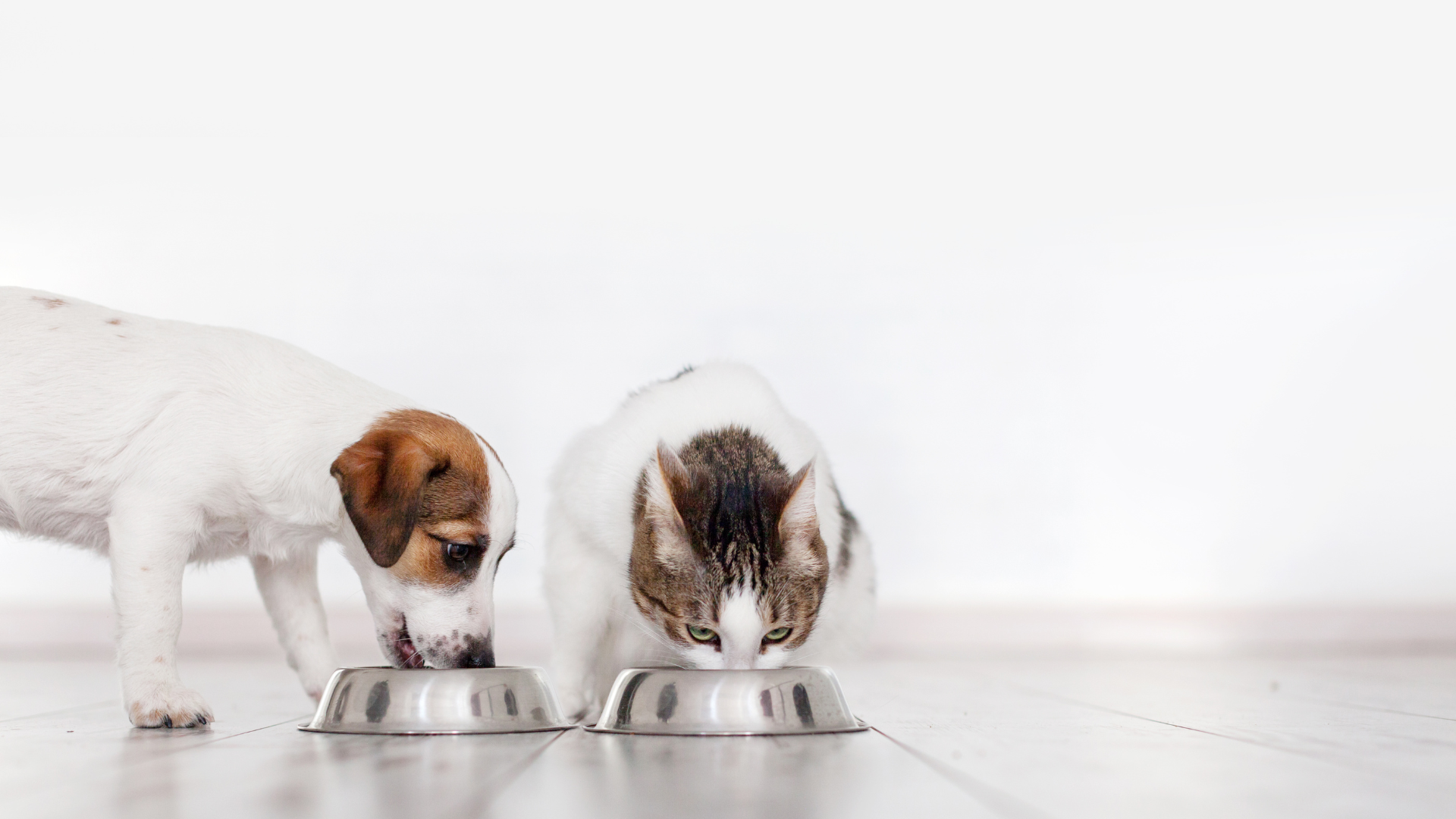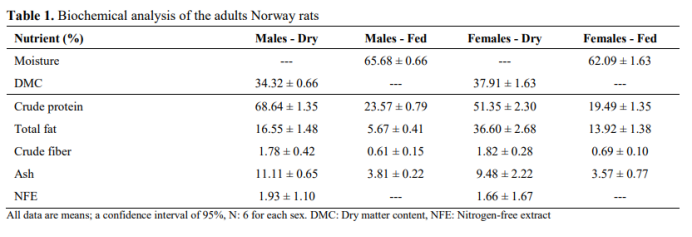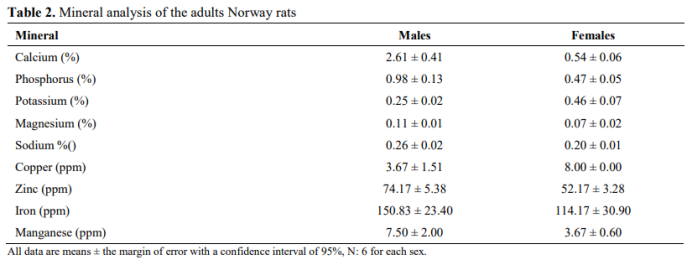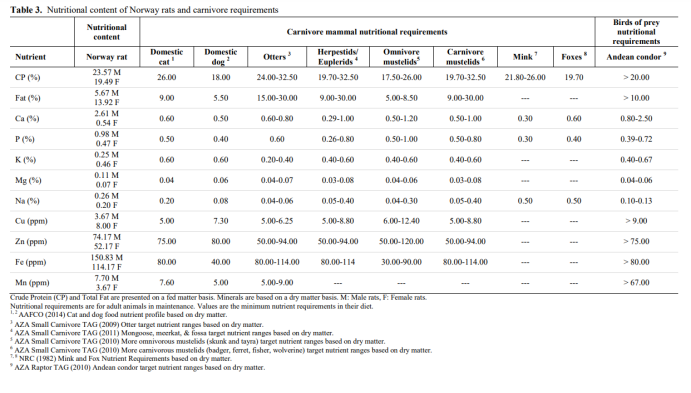Composition of Feeder Rats - Does Whole Prey Meet Nutritional Standards for Cats and Dogs?

Frozen feeder rats are a popular choice among pet owners who wish to provide their animals with a healthy, nature-inspired diet. At Raw Petfood, we know this firsthand: frozen rats end up in an average of every fourth basket composed by our customers.
Fulfilling our mission of supporting caretakers in providing the best possible nutrition for their pets, we couldn't ignore the research of Natalie Mariel Baudrexel Delboy, who investigated how feeder rats truly meet the nutritional needs of predatory animals. The researcher from the Faculty of Veterinary Medicine and Animal Husbandry at San Carlos University in Guatemala published her findings in the World’s Veterinary Journal in 2022, and today we will look at some important data and conclusions from the article.
In Search of the Ideal Diet
Baudrexel Delboy confirms what anyone reading this text is likely already aware of - that animal nutrition has a significant impact on their health, growth, reproduction, and lifespan. The researcher briefly explains how wild animals compose their diet, selecting prey based on macronutrients or selectively feeding on certain body parts... and of course notes that it is difficult to regulate diet this way for animals raised in homes or zoos. Here we, the caretakers, come in with our care and knowledge, which we use to select substitute diets for our charges.
Do Cats and Lions Eat the Same Thing?
It is interesting to note that we do not know the exact nutritional requirements for all animals living in captivity. This is due to the difficulty in obtaining enough blood, urine, and fecal samples to conduct comprehensive studies on many species of wild animals kept in zoos, for example. Therefore, combinations of the nutritional requirements of well-studied carnivorous animals are used as guidelines for feeding other, less studied wild animals. Thus, the domestic cat, well-studied, becomes a model species used to determine the nutrient requirements of large cats, otters, and viverrids, while the nutritional requirements of the dog serve as a reference point for (among others) large canids and mustelids.
The Place of Rats in the Diet of Predatory Animals
So where do rats fit into all this? Rodents are a common and natural source of food for a significant portion of reptiles, birds of prey, and small mammals, which is why we often choose them as food for zoo animals and those living with us at home. This is based on the belief that whole prey (whole prey) will be the diet most similar to the natural diet of many carnivores, and behaviorally, whole prey serves as an important form of environmental enrichment, improving the biological functioning of animals by stimulating their natural foraging behaviors. However, Natalie Mariel Baudrexel Delboy pointed out the lack of research on the nutritional components of rats as part of the diet and decided to fill this gap.
Feeder Rats - What Are They?
The study subjects were laboratory rats, derived from the domesticated brown rat (Rattus norvegicus) of the 19th century. Today, these rats are a genetically distinct population from the original wild type: they are more docile, live peacefully in larger groups, rarely attack or flee, and also have longer reproductive lives. These traits make these rats commonly bred to provide food for cats, dogs, domestic reptiles, as well as for zoos and aquariums.
Nutritional Composition of Feeder Rats - How Was It Studied?
Six female and six male Wistar rats were selected for the study. They weighed between 50 and 80 grams and were 20-25 days old. They were divided into two groups by sex to prevent breeding and avoid depression associated with isolation.
The rats were placed in transparent plastic boxes with a capacity of 12 liters, with food and water containers suspended above the ground to avoid contamination from feces. The animals were kept in an air-conditioned room with a constant temperature of 21-23°C, a 12-hour day and night cycle, 45% humidity, and controlled ventilation. The bedding in the boxes was changed every three days using pine chips that had been previously sterilized from microorganisms and parasites.
The rats were fed dry dog food, which is common practice in Guatemala. The rats ate as much as they wanted, and the average amount of food consumed was about 30 g per rat per day in the first two weeks. In the third and fourth weeks, this increased to about 60 g, and from the fifth week, each rat consumed about 120 g per day.
The rats were fed until they reached a weight of 300 g, which took 6 weeks for the males and 12 weeks for the females. They were weighed weekly to monitor weight gain and health status.
A significant difference in growth rates between males and females was noted: males reached 300 g in 6 weeks (62-67 days of life), while females took 13 weeks (111-116 days of life).
After reaching 300 g, the rats were euthanized according to IUCN ethical guidelines and the AVMA guide for animal euthanasia. Lidocaine was used for this purpose, acting as a painkiller and then leading to brain death without affecting other tissues.
Methods of Analyzing the Nutritional Composition of the Studied Rats
The study determined the moisture, protein, fat, fiber, ash, and carbohydrate content in the samples. An oven drying method was used to determine moisture. The rats were thawed, cut into pieces, and then dried in an oven for 72 hours at 60°C until 80% of the moisture was removed. Samples were weighed daily to monitor moisture reduction. Partially dried samples were ground to particles ≤ 2 mm and stored in airtight containers. To obtain completely dry mass, samples were dried at 105°C for 24 hours.
Macronutrients were analyzed according to the methods of the Association of Official Analytical Chemists, except for ether extract. Crude protein was determined using the Kjeldahl method. Fat was extracted using the Randall technique. Crude fiber was obtained according to the ceramic fiber filter method. Total ash was determined by ashing samples at 600°C for 2 hours. Carbohydrate content (NFE) was calculated using the formula: NFE = 100 – (Crude Protein % + Fat % + Crude Fiber % + Ash %).
Minerals were analyzed using 5 g of partially dry mass. Samples were burned at high temperature (450°C) for 4 hours to remove interfering substances. Minerals were recovered using hydrochloric acid (HCl) and their content determined. Phosphorus was measured with a UV/VIS spectrophotometer, and other minerals by atomic absorption spectroscopy (AAS).
Differences between sexes in nutrient and mineral content were analyzed using statistical tests (Mann-Whitney U or t-Student). Means and standard deviations were calculated for each sample (N=6 for each sex).
Analysis of the Nutritional Composition of Feeder Rats
The biochemical analysis results are presented in the table. It was noted that males had a higher percentage of moisture and protein, while females were found to be a better source of fat. The researcher further explains that some studies have shown the influence of testosterone on muscle tissue development in males, while estrogen may increase fat tissue in females.

The mineral analysis results are presented in another table. Male rats were found to contain five times more calcium (2.61%) than females (0.54%), citing studies showing that calcium levels depend not only on the sex of the rats but also on their age - males in adolescence have more calcium than females of the same age, while females between 15 and 30 days of life had higher calcium levels than males. In Baudrexel Delboy's study, females presented higher levels of potassium and copper than males.

Another table compares the studied values with the nutritional needs of selected carnivorous animals. The comparison showed that the crude protein percentage of male rats falls within the daily requirement range for most small mammals and birds of prey. Female rats were a better choice for meeting the fat requirements of most animals.

Whole rats also provided the majority of mineral needs, with males being a richer source of calcium, phosphorus, and manganese, while female rats were a better source of potassium, magnesium, copper, and iron.
It should be noted that cats and dogs may require slightly higher levels of potassium, magnesium, and zinc. Therefore, we referred to other studies for analysis of the compositions of other available products in our pet food store, to find that young adult mice can meet the magnesium needs of pets (up to 0.05 according to The Nutrition Advisory Group of the American Zoo and Aquarium Association data), while zinc requirements can be met by mouse pinkies (up to 82.5 according to Douglas et al., 1994 and Dierenfeld et al., 1996) and one-day-old chicks (up to 97.4 according to NAG data).
Conclusions from the Analysis of the Nutritional Composition of Feeder Rats
Although the study showed differences in the nutritional composition of males and females, the key to a balanced diet seems to be feeding rats of both sexes. The researcher acknowledges that rats, in general, will provide essential nutrients for most of our charges (dogs, cats, birds of prey), but notes that fed as the sole diet, they may not meet the long-term nutritional requirements of animals.
The study thus proves the assumption that whole prey is a healthy, nature-like diet for carnivorous pets. At the same time, it reinforces our belief that this feeding method best serves our animals when we ensure its variety - not only by feeding individuals of different sexes but also of different ages and species.
The article was prepared based on the study Nutritional Content of Adult Norway Rats for Small Carnivores’ Feeding by Natalie Mariel Baudrexel Delboy, published in the World’s Veterinary Journal World, Vet J, 12(2, pp. 141-150, June 25, 2022.
Text of the article: inessiwinska@gmail.com
Recommended
![Mice M 10/15g [25 Stuck]](https://static1.raw-petfood.pl/hpeciai/eb0fa26b42461cd46c27d9f49dc9e19a/pol_il_Myszy-M-10-15g-25-sztuk-15.jpg)
Mice M 10/15g [25 Stuck]

1/2g suckling mice PACK of 100pcs

Rats 250/350 g

